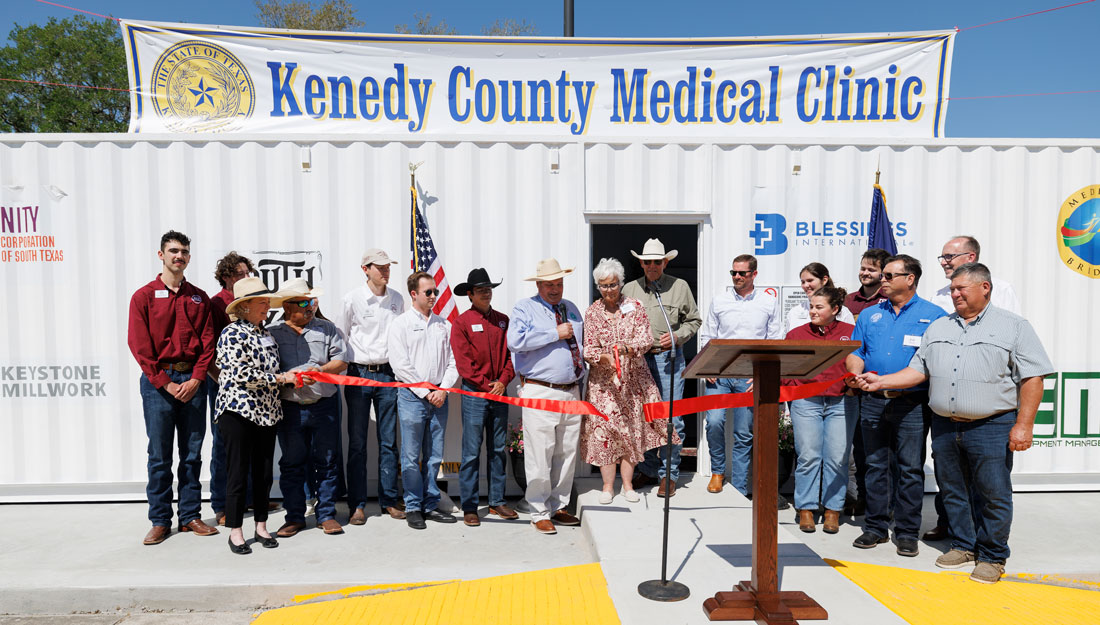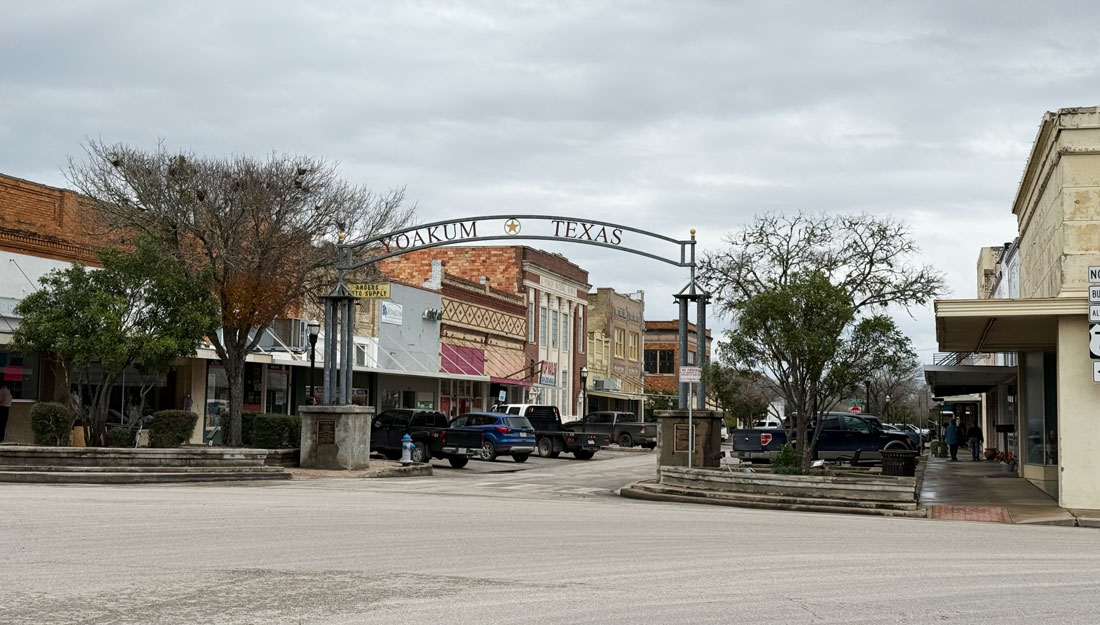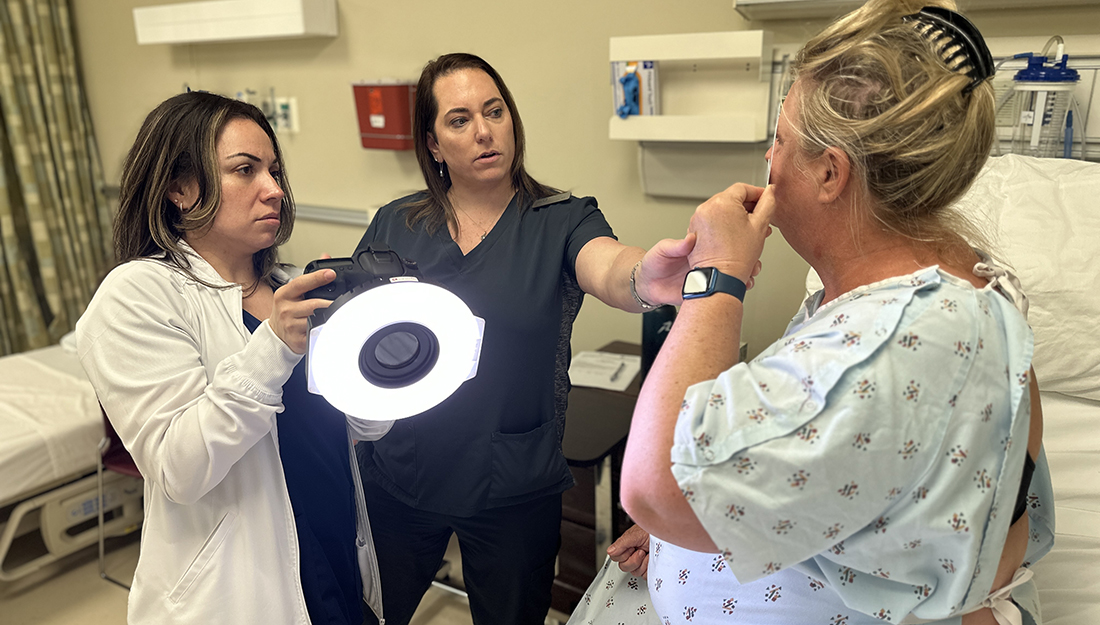- Dee Dee Grays
- Community, Dentistry, Featured, Medicine, Nursing, Pharmacy, Public Health, Show on VR homepage
Texas A&M Health trains 700 students in mass disaster response scenario
Health professions students participate in the 16th annual Disaster Day simulation
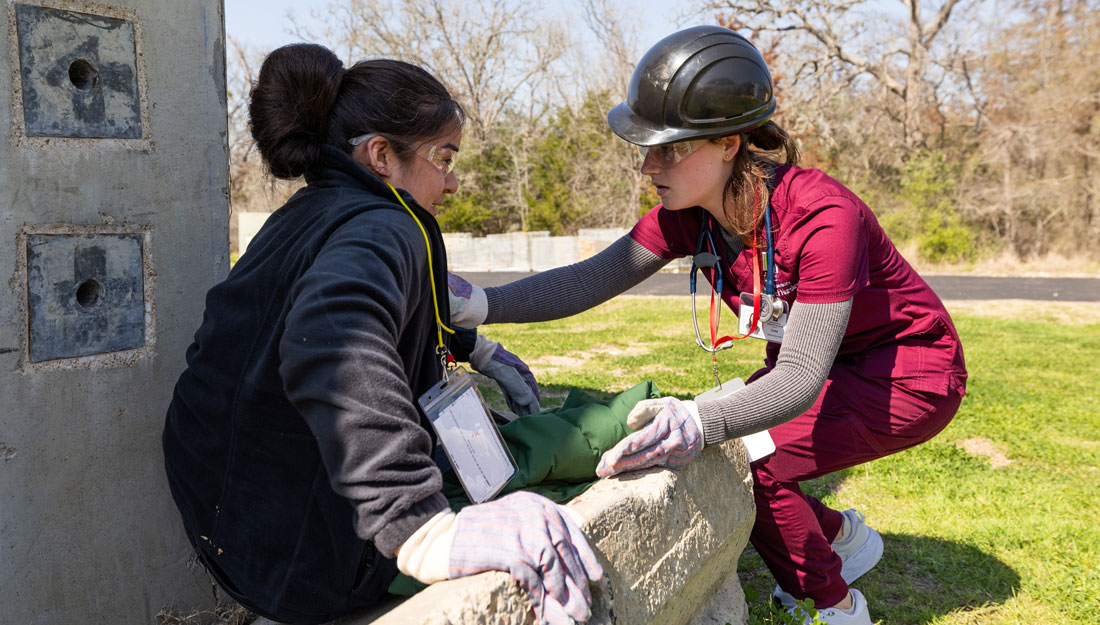
Disaster Day provides a realistic emergency scenario to train Texas A&M Health students how to respond in a mass disaster. (Cameron Johnson / Texas A&M Division of Marketing and Communications)
More than 700 future health care professionals participated today in the Texas A&M University Health Science Center (Texas A&M Health) annual Disaster Day emergency response simulation training. Held at Texas A&M Engineering Extension Service’s (TEEX) Disaster City, the event provides a realistic emergency scenario to train Texas A&M Health students in skills needed during a large-scale emergency. This is the event’s 16th year.
According to the National Oceanic and Atmospheric Administration (NOAA), 28 weather and climate disasters struck the United States in 2023. From wildfires to flooding, the cost of these disasters totaled a record cost of $92.9 billion. America also saw multiple man-made disasters last year, including mass shootings and train derailments. Whether it is natural or man-made, there is always a human toll during disasters and having health care professionals trained in emergency response is crucial.
“Since 2020 alone, Texas has seen over 15 disasters and related declarations, including wildfires, tropical storms, hurricanes, winter storms, and of course COVID-19. Ensuring that our health professions students are prepared to respond effectively when, not if, a disaster strikes is crucial. It is also important that these students learn collaborative, team-based skills to ensure the best possible health outcomes,” said Christine Kaunas, EdD, MPH, assistant vice president for Interprofessional Practice, Education & Research (IPER) at Texas A&M Health.
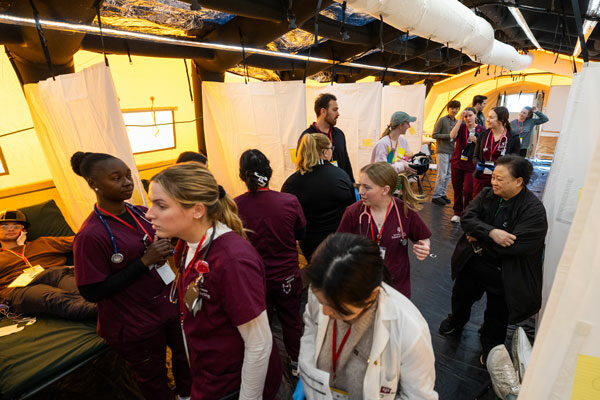
Started by the Texas A&M School of Nursing in 2008, the event has grown from a small event in the gym of a local church to nearly 1,000 people orchestrating and taking part in the mass simulation. The student-led event welcomed more than 700 Texas A&M students, more than 100 faculty and staff, and numerous emergency response professionals to participate in the daylong disaster simulation. Students from Texas A&M schools of dentistry, medicine, nursing, pharmacy and public health, as well as athletic training, psychology and veterinary medicine students and the Corps of Cadets participated in the drill.
As a student-led event, more than 50 students from Texas A&M Health work on a planning committee that does everything from organizing student participation and training to creating the case scenarios for the drill. They do this with guidance and oversight from a 30-member steering committee consisting of Texas A&M faculty and staff from participating health care disciplines and administrative areas as well as staff from TEEX/Disaster City and the Texas Division of Emergency Management.
Each year, a new scenario is selected and kept secret until the day of the event to provide the realism of an unexpected situation. This year’s simulated disaster was multi-tiered and included a tropical storm, flooding, an earthquake and an active shooter. The students engaged in triage at the disaster site, patient care at the mock field hospitals, mental health care and needs assessment at an evacuation shelter and family reunification center, and disaster management and simulation oversight at Disaster City’s Emergency Operations Training Center.
During the simulation, students take on the role of patients or providers or engage in search and rescue. Students who participate as patients receive makeup known as moulage to mimic injuries based on the scenario. As the drill begins, patients act out the case they are assigned, while students acting as physicians and nurses do field assessments then transfer patients to a field hospital for more diagnosis and treatment. Pharmacy students work with providers to determine the medications needed, and psychology students provide the mental health care required for disaster victims. Athletic training and dentistry students provide specialized care in orthopedic and soft tissue trauma, and head and neck injuries, respectively. Public health students manage the disaster to deploy resources and address outbreaks. The veterinary students provide care for animals affected by the disaster.
“Disaster Day serves as an amazing learning opportunity for students by striking a balance between the chaos of an emergency and providing the structure and support necessary for successful and meaningful learning,” said Lyssa Losa, a graduate student in Environmental Health at the School of Public Health and planning director for Disaster Day.
As the event has grown, so has the collaboration with corporations and government agencies, including H-E-B, Salvation Army, St. Joseph Health, Pulsara and the Texas Department of Emergency Management. Members of the university community, private and public partners and other representatives from local, state and federal agencies toured this year’s event to learn about Texas A&M Health’s efforts to address disaster response by the health care community.
“Disaster Day stands as a testament to Texas A&M Health’s proactive commitment in shaping agile and resilient Aggie health professionals,” said Indra Reddy, PhD, interim chief operating officer and vice president of Texas A&M Health. “With the escalating frequency of large-scale emergencies, we take pride in the assurance that Aggie health professionals are well prepared and ready to respond.”
Media contact: media@tamu.edu
